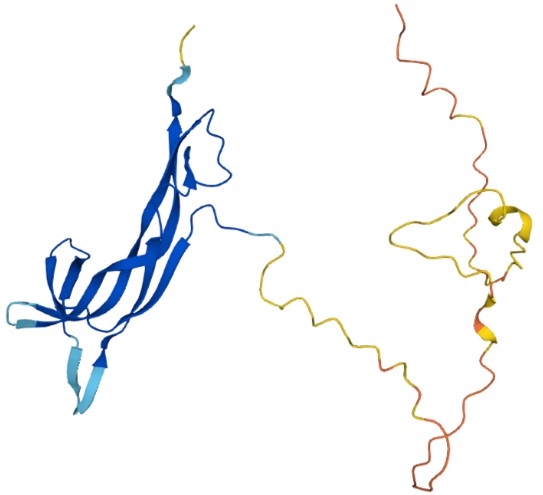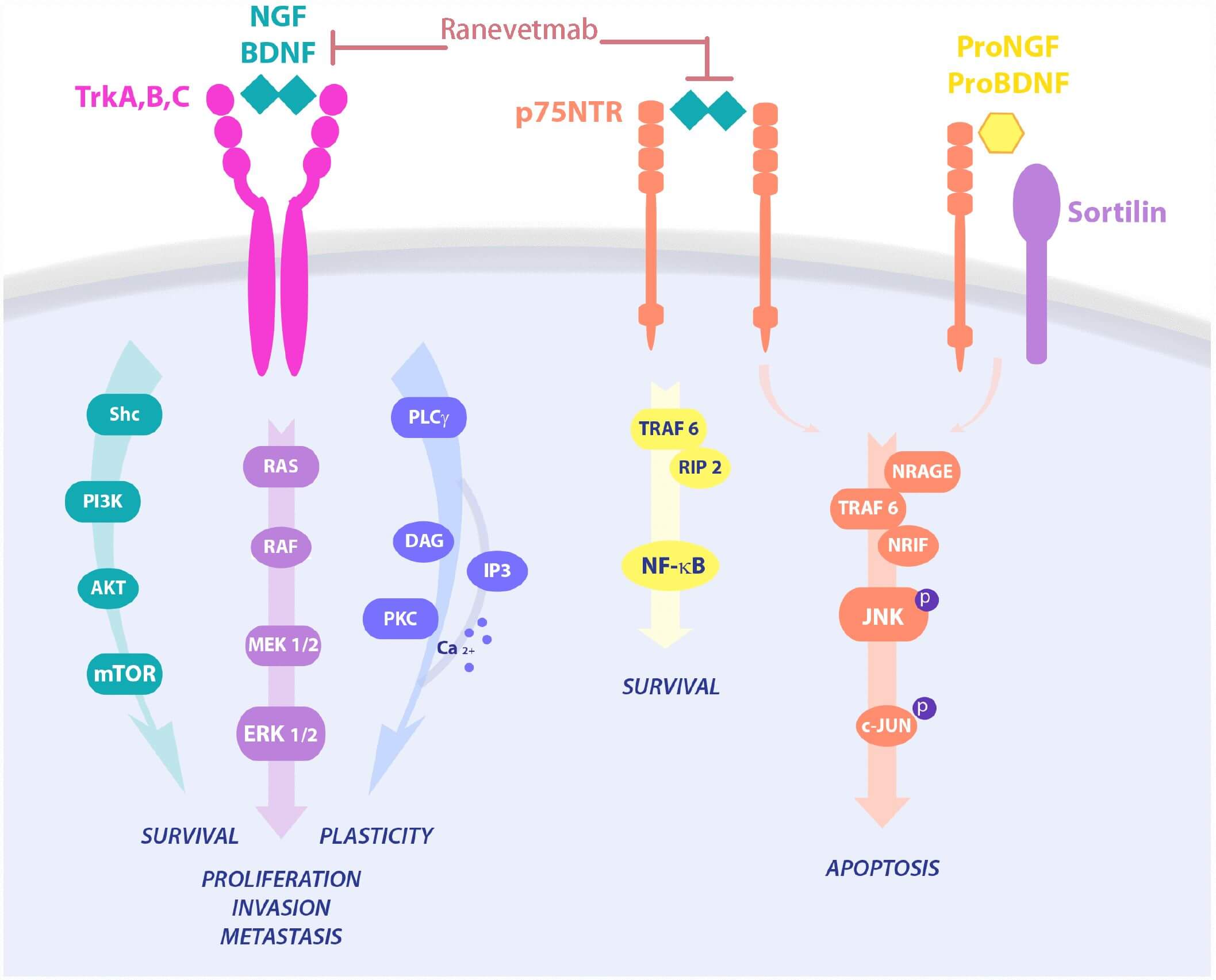Ranevetmab Overview
Introduction of Ranevetmab
Ranevetmab, also known as NV-01, is a fully canine-derived IgG1 monoclonal antibody specifically designed to target nerve growth factor (NGF) for veterinary applications. NGF, initially identified by Rita Levi-Montalcini in the 1950s as a member of the neurotrophin family, is extensively referred to as a critical mediator of pain and inflammation, especially in chronic inflammatory conditions like osteoarthritis. NGF is a homodimeric protein consisting of two identical subunits, with its primary receptors being TrkA (a tyrosine kinase receptor) and p75NTR (a member of the TNF receptor superfamily). Under normal conditions, NGF plays a vital role in neurodevelopment, modulating immune responses, and acting as a signaling molecule between the nervous and immune systems. However, in pathological conditions, NGF levels are elevated, exacerbating pain by sensitizing nociceptors and promoting inflammatory responses. To be more precise, there is a feedback loop between NGF and its coactive peptides involved in pain transmission named substance P (SP) and calcitonin gene-related peptide (CGRP) respectively. Firstly, NGF can modulate the expression of the SP and CGRP, increasing the release of inflammatory cytokines. These increased cytokines facilitate further NGF production in return, finally inducing ever-lasting chronic pain and inflammation.
Ranevetmab is primarily indicated for the treatment of osteoarthritis in dogs. Canine osteoarthritis is a degenerative joint disease characterized by cartilage deterioration, joint inflammation, pain, and reduced mobility. As cartilage breaks down, inflammatory mediators such as cytokines (TNF-α, IL-1β) and NGF are released, further degrading cartilage and promoting pain and inflammation. Ranevetmab targets and neutralizes NGF, preventing it from interacting with its receptors TrkA and p75NTR. Interruption of the pain signaling pathways helps reduce the overall inflammatory response, offering a novel therapeutic approach for managing canine osteoarthritis. This demonstrates the promising potential of biotechnology in enhancing animal welfare. Beyond osteoarthritis, ranevetmab holds promise for other conditions characterized by chronic pain and inflammation, including intervertebral disc disease, trauma-related pain, and cancer-associated pain. However, these applications remain investigational, and further research is needed. Clinical trials and field studies have demonstrated that ranevetmab significantly improves pain scores and enhances the quality of life for dogs with osteoarthritis. Unlike traditional pain management options like NSAIDs and opioids, ranevetmab offers a targeted therapeutic approach with potentially fewer side effects.
Biological and Chemical Properties of Dog Beta-nerve Growth Factor
Protein Structure
 Figure 1. The Structure of Dog Beta-nerve Growth Factor (UniProt)1,2
Figure 1. The Structure of Dog Beta-nerve Growth Factor (UniProt)1,2
The Mechanism of Ranevetmab Action
Ranevetmab exhibits high affinity and specificity for NGF. NGF exerts its biological effects primarily through the TrkA receptor. When NGF binds to TrkA, it induces receptor dimerization and autophosphorylation, activating downstream signaling pathways such as PI3K-Akt and MAPK/ERK. These pathways are involved in cell survival, growth, and pain sensitization. In addition to its interaction with TrkA, NGF can also bind to the p75NTR receptor, although with lower affinity. p75NTR can modulate the signaling outcomes of TrkA and influence the expression levels of pain-related neuropeptides. In inflammatory conditions, p75NTR is upregulated, which contributes to increased pain sensitivity. Ranevetmab works by binding to specific epitopes on NGF, blocking its active sites, and rendering it biologically inactive. This prevents NGF from interacting with its receptors, thereby reducing peripheral and central sensitization. As a result, pain perception is significantly diminished. NGF is also implicated in modulating immune responses. By neutralizing NGF, ranevetmab indirectly reduces the production of pro-inflammatory cytokines, thereby alleviating inflammation. This immunomodulatory effect is particularly beneficial in chronic conditions like osteoarthritis, where inflammation is a key driver in disease progression.
 Figure 2. NGF Signals and the Mechanism of Ranevetmab Action3,4
Figure 2. NGF Signals and the Mechanism of Ranevetmab Action3,4
- Uniprot Database (https://www.uniprot.org/uniprotkb/Q531B0/entry)
- The image was retrieved from UniProt Database and used under [CC BY 4.0]. It was not modified and the title was " The Structure of Dog Beta-nerve Growth Factor (UniProt)".
- Triaca, Viviana et al. "Cancer stem cells-driven tumor growth and immune escape: the Janus face of neurotrophins." Aging vol. 11,23 (2019): 11770-11792.
- Images retrieved from Figure 1 "Cancer stem cells-driven tumor growth and immune escape: the Janus face of neurotrophins." Triaca, Viviana, 2019, used under [CC BY 3.0] (https://creativecommons.org/licenses/by/3.0). The image was modified by adding the text "Ranevetmab" and the title was changed to "NGF Signals and the Mechanism of Ranevetmab Action".
For research use only. Not intended for any clinical use.
This site is protected by reCAPTCHA and the Google Privacy Policy and Terms of Service apply.

